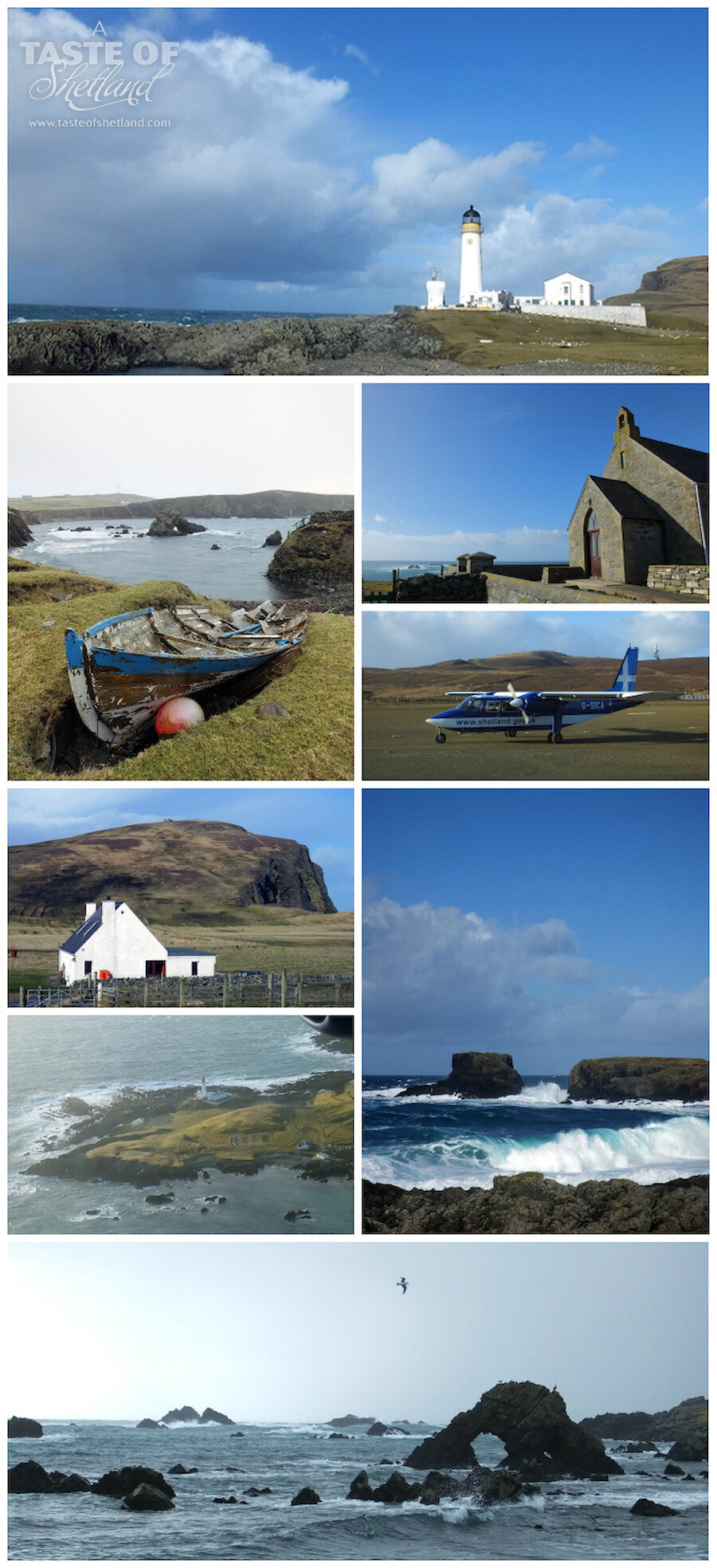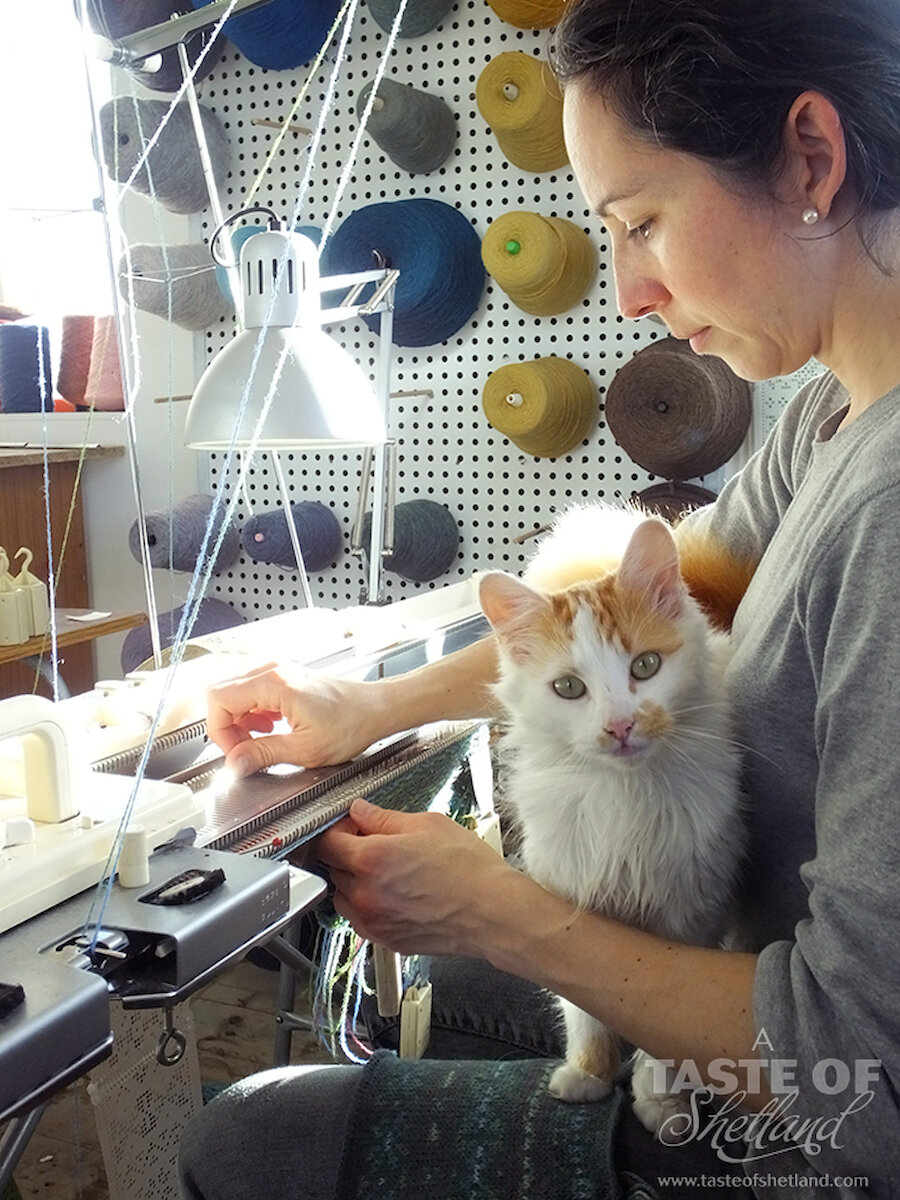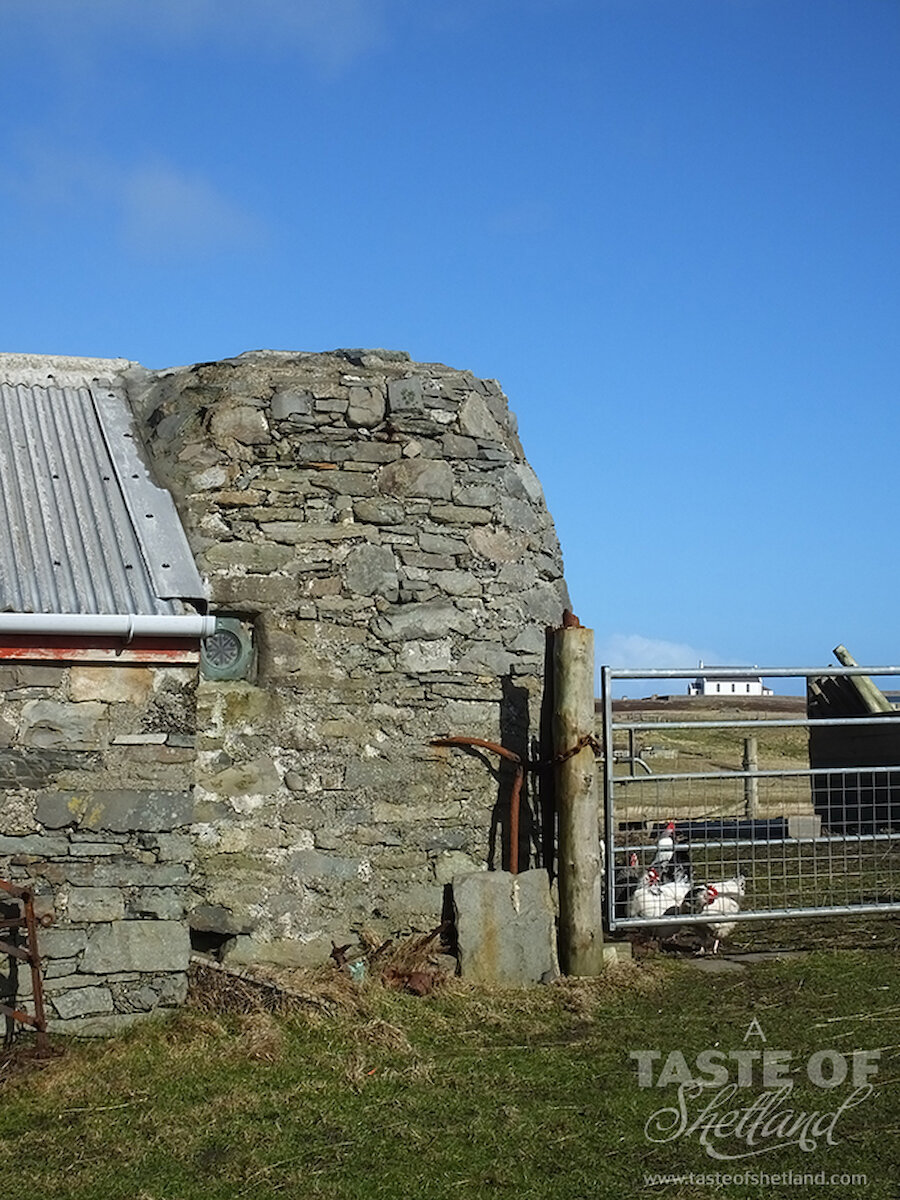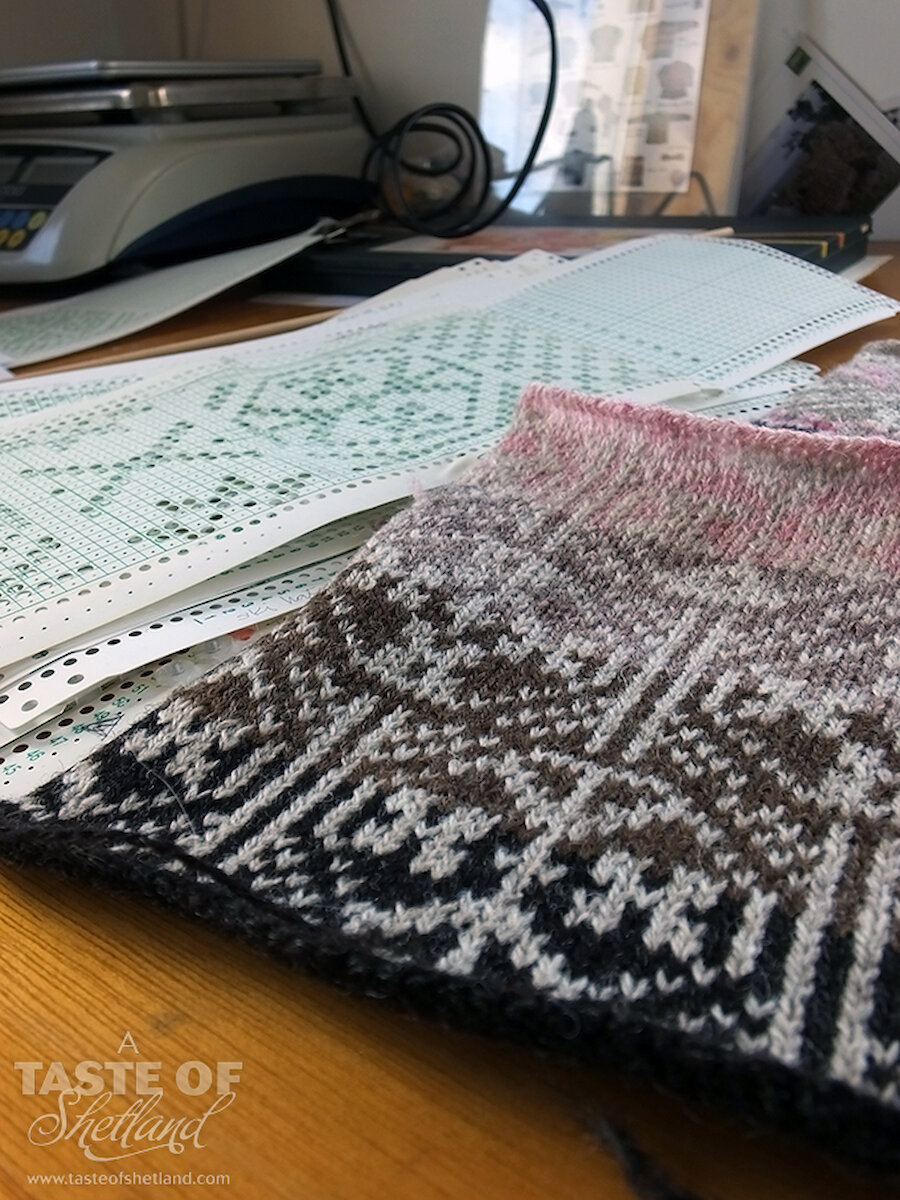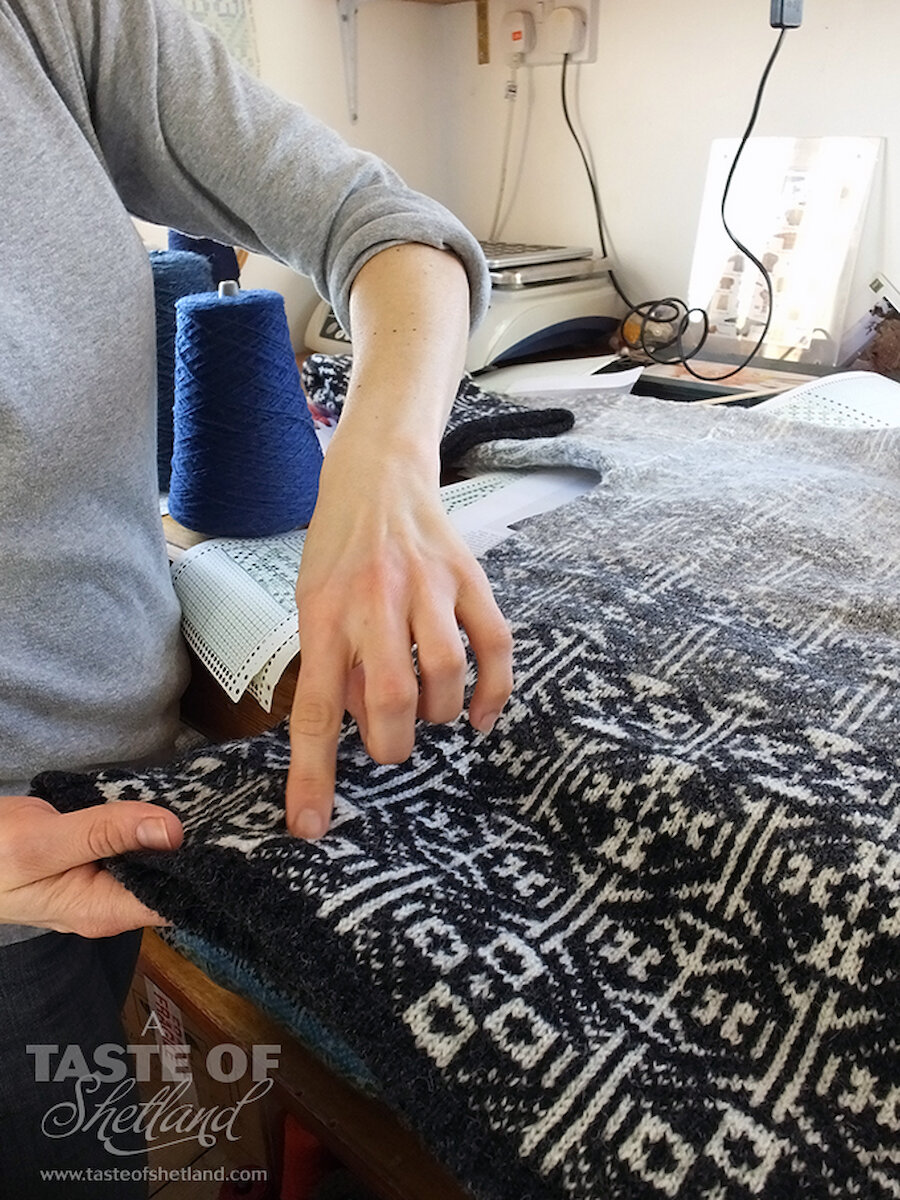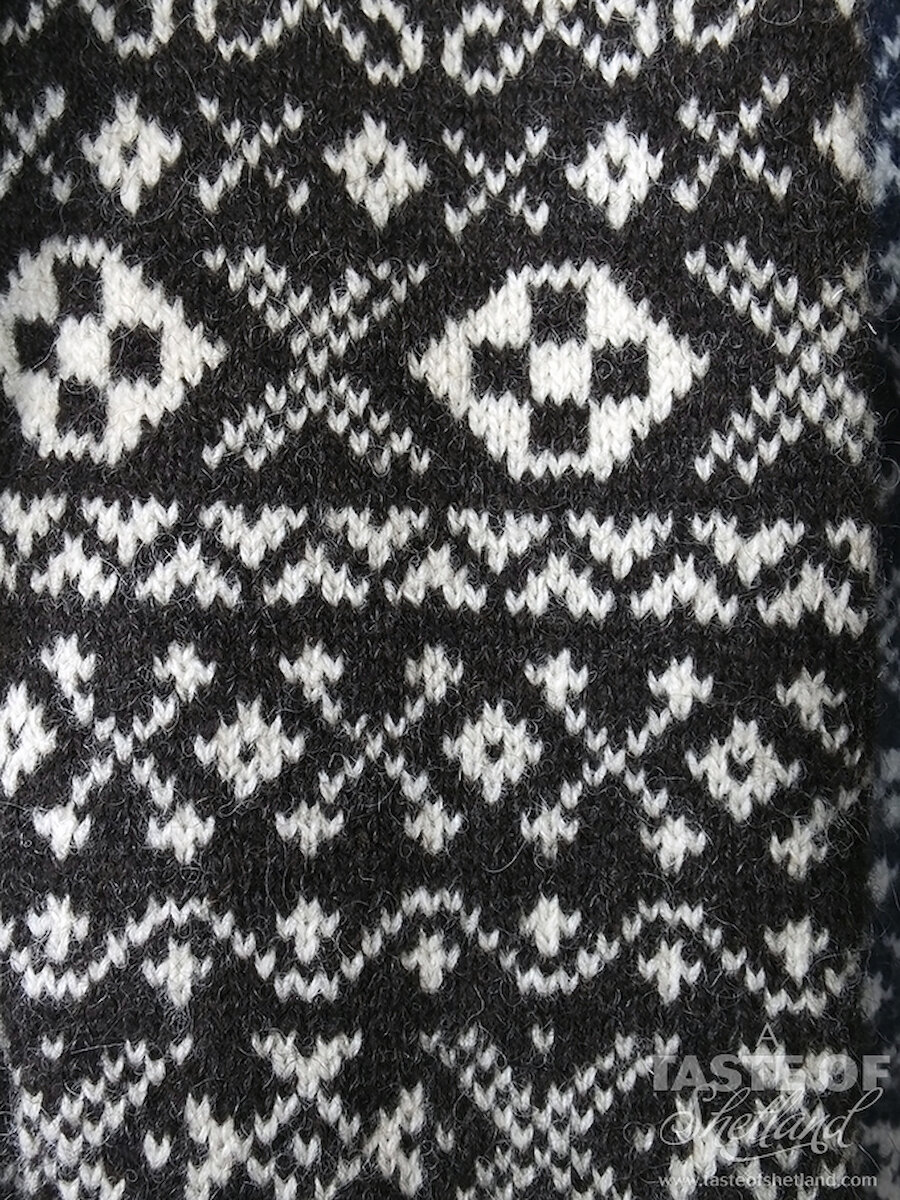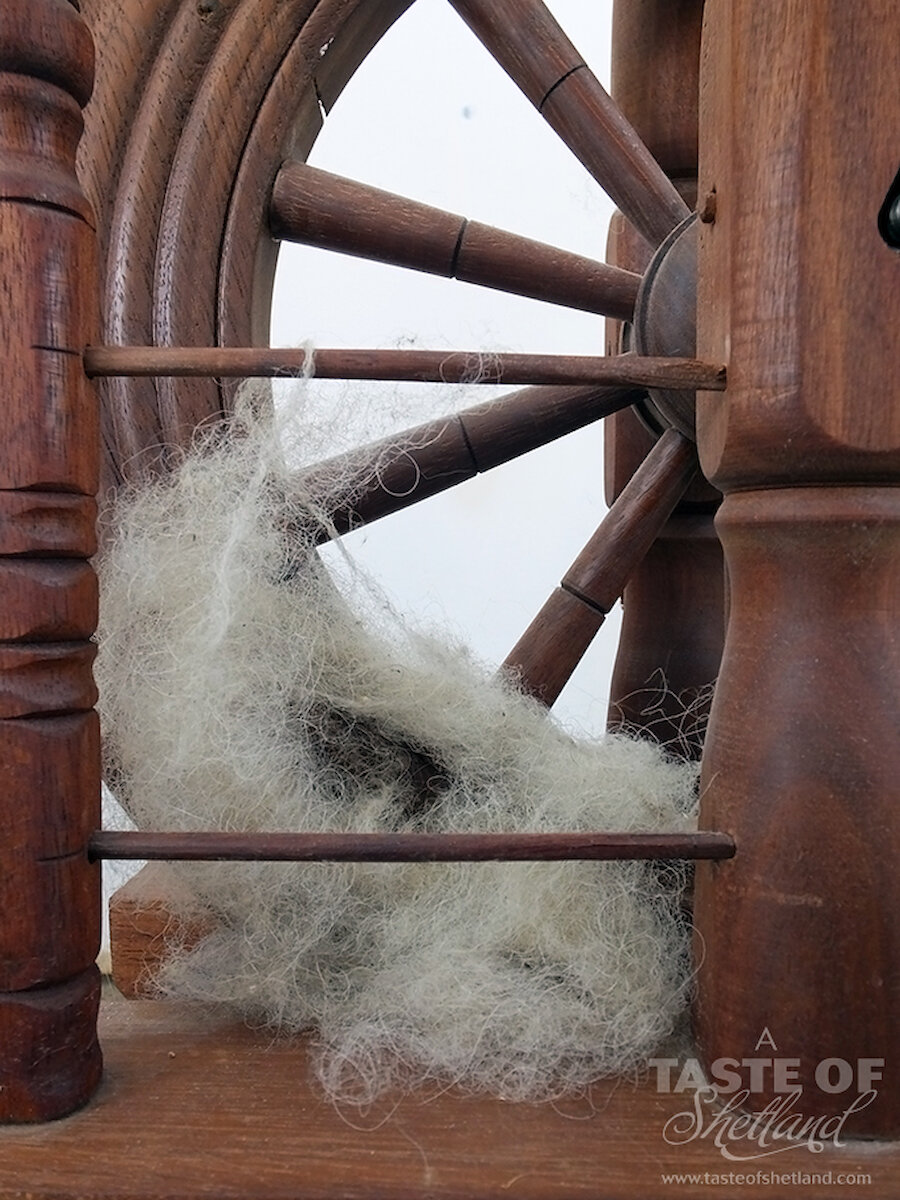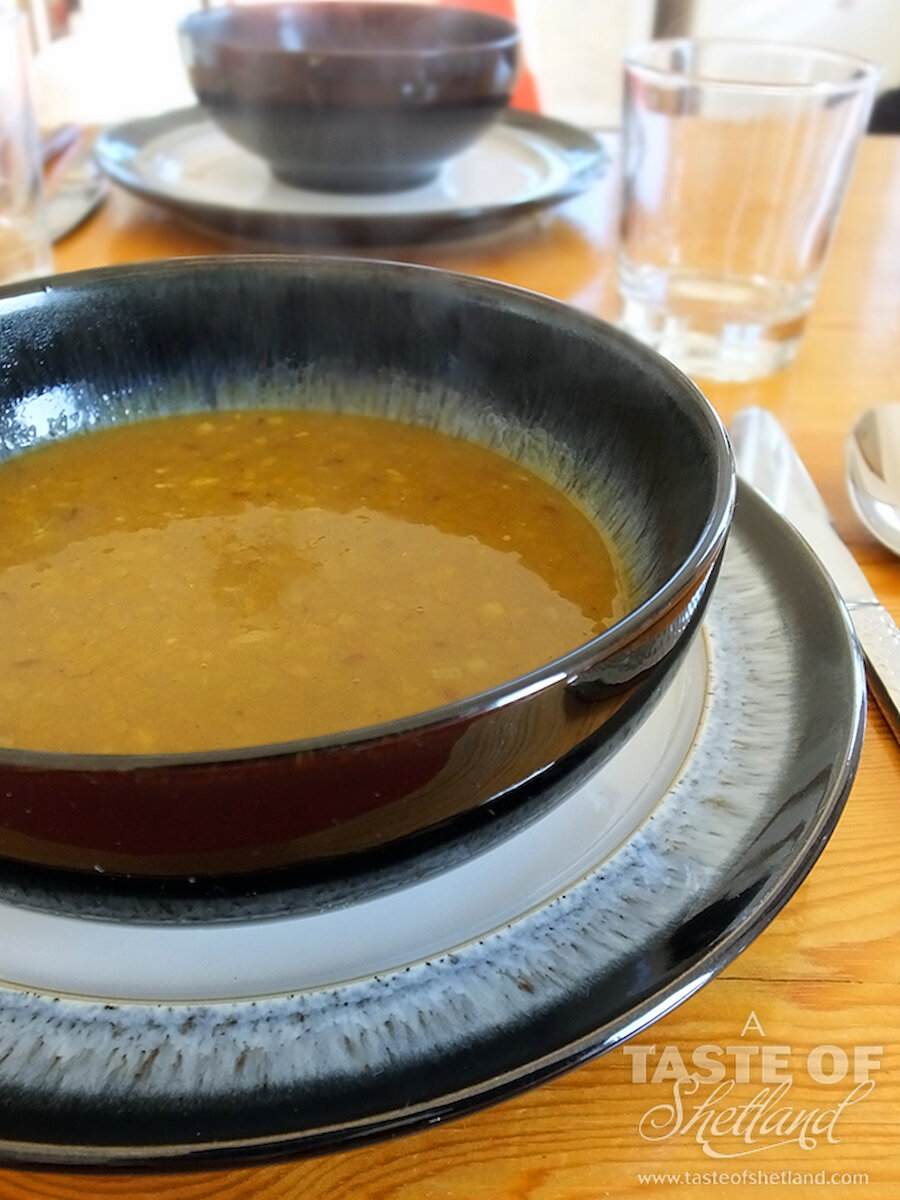I've called these wild and beautiful Shetland islands home for over 16 years now. Visiting Fair Isle, home of the world-famous Fair Isle knitwear, has been on my bucket list ever since I moved here, and I am delighted that I had the opportunity recently to cross a visit to this beautiful island off my list.
My first glimpse of Fair Isle was from an 8-seater aircraft which bumped its way over 25 minutes of open sea south west of the Shetland mainland, with the glorious sun streaming in through the windows. It was going to be a good day.
The journey to/from Fair Isle was an adventure unto itself, and I was glad I'd chosen to fly instead of taking the three hour ferry. I can highly recommend the flight - the views up the west coast of Shetland and over to Fair Isle are incomparable!
The purpose of my visit to this jewel in the ocean was to visit Fair Isle textile artist Mati Ventrillon of Fair Isle Knitwear.
Mati is originally from Venezuela. While living in London she saw an advertisement for a job in Fair Isle with the National Trust for Scotland, who manage the island. Thousands of people applied for the job. Mati visited and fell in love with the place.
Her application was unsuccessful, but she kept in touch with the Trust. When a flat became available in the south lighthouse on the island, they let her know and she moved up with her family. Shortly after, as luck should have it, a croft became available for rent.
"I've always lived in big cities," Mati explains, "and I had no experience of croft life and keeping animals."
With the help and support of her neighbours who encouraged and taught her how to grow, she's learned how to manage her small croft of sheep, a Shetland cow, hens and growing produce including oats for her cow.
When Mati first moved to Fair Isle the island had a knitting co-operative. They were needing new people to pass their knowledge on to, and to help meet the worldwide demand for traditional Fair Isle knitwear.
Mati showed an interest and the women of the co-operative were very welcoming. She began finishing garments and in her second year on the island trained on the knitting machine. Mati learned quickly, paying attention to detail and listening to the stories about the history of the patterns on the Fair Isle garments she was working with.
"It was a very, very hard life," Mati explains, "in the 1800's there were over 300 people living on this island trying to survive. The moment you could walk you were put to work."
Mati believes that very few people are aware that Fair Isle garments are still made on Fair Isle, or even that Fair Isle exists as an island. There is a beauty in the garments, an intricacy of detail in the work that Mati thinks people should know about.
"We're not just knitters", Mati continues, "We are mothers, crofters, volunteers. We all wear so many hats.
We are not making mass produced garments. We don't run a factory. All the details you see represent the knitter, from the colour to the pattern.
Every garment carries a piece of the knitter's soul in it."
Sadly, the Fair Isle Crafts Co-operative dissolved in 2011 but many of the knitters continued on their own. Mati too carried on, applying to a mentor program: Crafted UK.
Crafted is a joint initiative between Walpole British Luxury and Arts & Business with a primary aim to increase self-sustainability and stimulate business growth amongst craft entrepreneurs. This is done by providing 10 craft entrepreneurs each year with mentoring and business advice, while connecting high-end luxury businesses with a new generation of skilled craftspeople.
Mati's application was successful, and her experience with them was nothing short of amazing, she says. It was a great opportunity to learn about ethical business, to stick to what is true to you and to strive to perfection, offering really high quality products.
Things just fell into place.
Mati began experimenting with changing the shape and appearance of the garments she was creating. A background in architecture helped her visualize and understand the shaping of the garments.
"There's a language in the 19th and early 20th century patterns," Mati continues. The background is made of stripes of two or three colours with a pattern, like a lace, laid over the top."
Mati began designing her own patterns around this observation, developing her own style referring back to the early traditional pieces.
She is particularly proud of a fisherman jumper she designed based on the writings about the Fair Isle jumpers worn by the explorers during the 1904 Bruce expedition to the Antarctic.
Mati's stunning garments are each individually designed and knitted to shape to give the best fit for the wearer. Shetland wool, grown and spun in Shetland is carefully hand-finished, washed and traditionally dried on a jumper board.
Mati is delighted she has gone down the path she has, combining the history of the island and knitwear into her own unique range. There are plans afoot for an online shop, and many of her items are available to buy online at CHUCS Dive & Mountain Shop.
Alternatively, why not have an item designed for you? You can contact Mati through her website or find her on Twitter and Instagram. Her studio is part of The Shetland Craft Trail, and she welcomes visitors.
While I was visiting, Mati made us the most gorgeous chana dal for lunch. She says that this recipe is the perfect thing to cook on a remote island because, due to it's location, they don't get a lot of fresh produce - especially during the winter months.
This recipe, made from store cupboard essentials and served with some warm, crusty brown bread - was a perfect lunch for a perfect day.
Chana Dal
Course: Main
Servings: 4 servings
Prep Time: 15 minutes
Cook Time: 1 hour
Ingredients:
- Split yellow peas - 1 cup
- Salt - 1 tsp
- Black tea bag - 1
- Water - 4 cups (plus 1 cup)
- Olive oil - 2 tbsp (or 3 tbsp ghee)
- Onion - 1/4 cup (finely chopped)
- Ginger - 2 tbsp (finely chopped)
- Cumin seeds - 1 tsp
- Ground turmeric - 1/2 tsp
- Ground cumin - 1/2 tsp
- Ground coriander - 1/2 tsp
- Garam masala - 1/2 tsp
- Chilli powder - 1/4 tsp
- Fresh coriander leaves - (to serve)
Instructions:
- Wash the peas very well and place them in a pan with the salt, tea bag and water.
- Bring to the boil, skimming the surface. Simmer until the peas are just ready (not too soft, they will still have some texture).
- Heat the olive oil in a saucepan and fry the cumin seeds for a few minutes.
- Add the onion and ginger to the cumin seeds and gently fry. When the onion begins to brown add the spices.
- Add the split peas with their cooking liquid to the onion mixture.
- Simmer for a further 10 minutes and then add the final cup of water at the end.
- Sprinkle with chopped fresh coriander (if available!) before serving.

